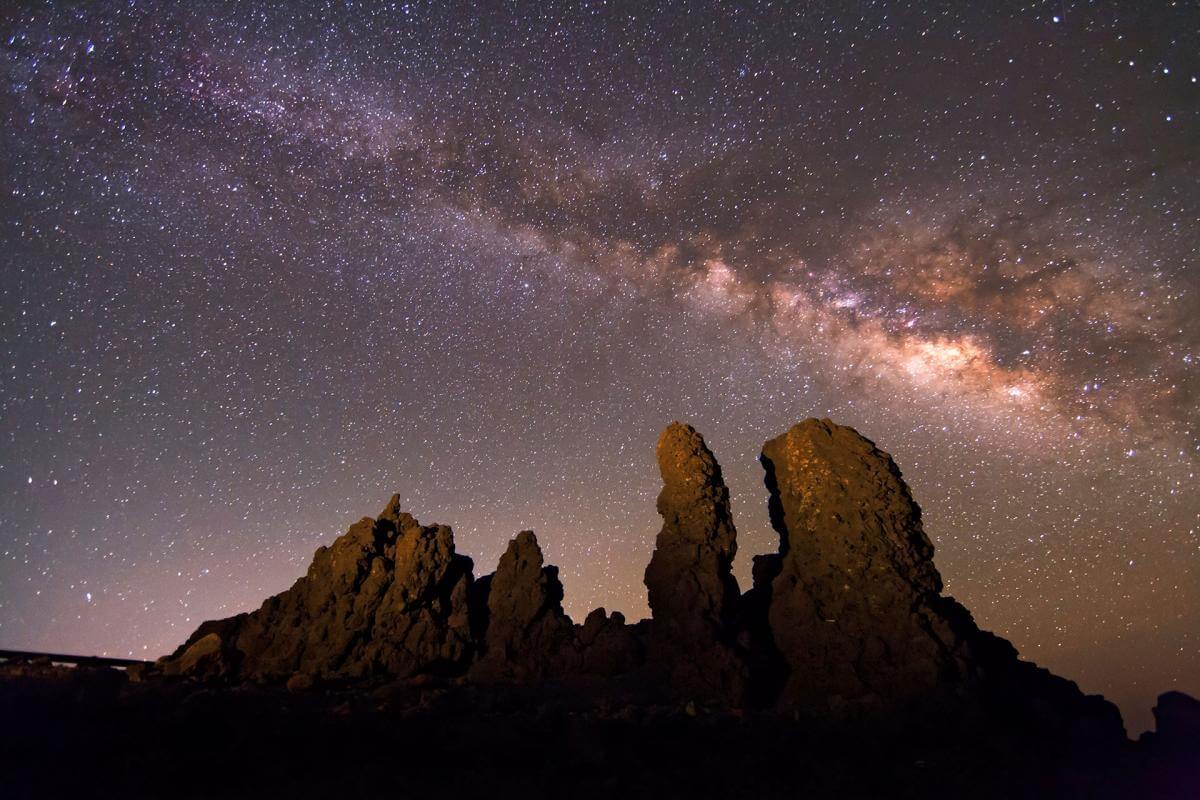Who is who in the Canarian sky? A few hints for watching the sky with children.






From the Canary Islands, to the sky. Literally. Because one of the great attractions of the archipelago are its clear skies, which delight any astronomy enthusiast, but as well anyone who looks up at night. It is impossible to resist the magnetic beauty of so many celestial bodies above their heads. Children are fascinated by it. No wonder.
The Gran Telescopio Canarias
We could explain here that the Canary Islands have the Gran Telescopio Canarias, located at the Roque de los Muchachos observatory on La Palma, at an altitude of 2396 meters, precisely because you can see everything more clearly from there; there is hardly any light pollution, a treasure increasingly difficult to find. It boasts the world's largest optical telescope, which allows us to learn more about black holes, the farthest stars and galaxies in the Universe and the initial conditions after the Big Bang.
Best during the new moon
But that is overwhelming for the little ones at home and for the uninitiated, so we suggest finding a quiet corner of any of the islands and, on a clear night, sit or lie down to admire the spectacle. Telescope? No, it's not necessary, truly. Binoculars? Not even that. These tools will always be better of course, but the clear skies of the Canary Islands allow the naked eye to observe wonders that are "hidden" for the vast majority of visitors in their places of origin. And since children have very good eyesight, they will enjoy it! It’s enough to shift away from the most inhabited areas, whose lighting can blur the views, and look for a site as high as possible and with a clear horizon of mountains and trees, and, if possible, during the new moon. It’s sufficient to make out the stars (even shooting stars), galaxies, constellations, satellites, nebulae, planets...



The stars twinkle, the planets do not
Because the sky doesn’t only contain stars. The ones sparkle are in fact stars. The ones that shine without trembling (they actually give off more light than the stars) are the planets: Venus is between white and yellow, for example, while Mars has reddish tones, and Saturn, being more orange, is one of the easiest to detect along with Jupiter.
Change of position
Due to the Earth's translational motion around the Sun, the panorama of the sky changes according to the season of the year. This causes the stars to change position even during the same night. So the best thing to do is to use a planisphere (a celestial map that can be moved and allows you to set the date and time to know what you can see that night) or search for specialized apps.






Ursa Major
Beyond the quadrants, degrees and latitudes with which to locate the stars, for beginners and children it is best to start with the constellations, which help to orient yourself in the sky because with them you can locate the four cardinal points. In the northern hemisphere, Ursa Major, also known as the Big Dipper or the Plough, is the reference. Catalogued by the Greek astronomer Ptolemy in the second century, this constellation, the third largest in the sky, is very easy to identify because of its shape like a ladle, frying pan or chariot, and is visible throughout the year in the northern hemisphere. It has seven main stars: Merak, Dubhe, Megrez, Pechda, Alioth, Mizar and Benetnasch.
The North Star marks the North
Merak and Dubhe, the two at the front of the "chariot," point toward the North Star, one of the seven stars of Ursa Minor (reminiscent of a small dipper, but inverted with respect to Ursa Major) and the brightest of them. And if you find the North Star, you find the North. To achieve this, an imaginary line of about five times the distance between Merak and Dubhe must be drawn. This is a different way to have fun at night with an infinite treasure: the sky. A sky that can’t be seen more of and in a better way than in the Canary Islands.






